Okoshi Daiko – Drums of Rising
The Okoshi Daiko Festival is peculiar as spontaneity rules over regularity, unusual in Japan.
The first documentary of this festival in a small village named Furukawa, close to Takayama in the central alps of Japan dates back to 1831, when the festival was named “drums of awakening. The festival is held every year, April 19-20. The name of Okoshi Daiko refers to a great drum about one meter in diameter and a set on a wooden support structure about a meter high; the drum and its support are firmly mounted in the center of a sturdy rectangular platform with dimensions of about four by eight meters This platform is then borne by about one hundred semi-naked young men wearing nothing more than white drawers, bleached cotton belly bands and whit headbands.
The second element to the festival are the Tsuke Daiko, which are logs of around four meters in length and carried by groups of ten or so young men form different wards, seen in the different emblems on the drums, fixed to the log.
Their aim is to cause their log to directly strike the great drum´s supporting framework. The various groups of Tsuke Daiko bearers wait at each street corner, post their log on the ground and perform various stunts on their log, thus awaiting the arrival of the great tower drum on its platform.
To put the event in a chronological order, the festival starts with groups of Tsuke Daiko arriving at a big gathering place in the center of Furukawa where the Okoshi Daiko is still waiting to be carried away.
These stunts are accompanied by drinking sake and raising their voices in great shouts and singing festival native songs such as ” The Furukawa Festival famous in sound–the valiant striking of the drum of the arising”. Although the season is spring, the last snows have only melted. As the evenings are still cold, drinking starts early on and the purpose of the bonfire is to keep the young men warm.
More and more Tsuke Daiko groups arrive on the place and compete with their stunts. An impressive atmosphere with appr. 10.000 people watching from all sides, while the Okoshi Daiko is finally lifted to be carried away. (difficult to catch from the distance with virtually no light).
Now the parade starts. The Okoshi Daiko is moving through the small streets and I find a spot at one corner the watch the spectacle to pass by.
Just a few minutes before and to my left a group of Tsuke Daiko had performed their stunts. Not everyone can easily climb up the pole and position himself on the top. Also, drinking sake is maybe not so helpful, but there is always a helping hand…
The shouts of the Tsuke Daiko and the uproar of the crowds packing the streets, the little town seems rather to have thrown away its every day restraint and modesty, which I observed during the day time, following the very disciplined performance of the mikoshi parade (which I will cover at a later date). Showing the rough side is called “Furukawa yancha”. This expression, to some articles, appears to have been used for a long time and it seems to indicate behavior involving the insistence on one´s desire in spite of being considered unreasonable.Some, so one source, consider the Tsuke Daiko to be a perversion of the festival. In the Meiji Period there have been clashes with the police, 200 young men were arrested at one time and the Tsuke Daiko was forbidden for a few years.
Half way through the village it was time to change the two drumers on top of the big drum.
As I mentioned, the daytime “ritual is observed with such solemnity that the wild Okoshi Daiko held at night are so conspciuous. The external restrictions fly out the window on the wings of an expectation of liberation. Here the minority of formally attired “named” powers lose their central role to the majority in the stark naked “unnamed” mass. Even though the Okoshi Daiko follows a predetermined course, but what actually regulates the overall tenor is the fierce attacks of the Tsuke Daiko which attempt to somehow disrupt the procession and bring it to ridicule. This is very unusual for Japan and I was very sympathetic to it. In my view, disobedience and a little disorder sometimes would be a healthy ingredient to Japanese society…
The last pictures on the second half of the procession through Furukawa. I hope you enjoyed.
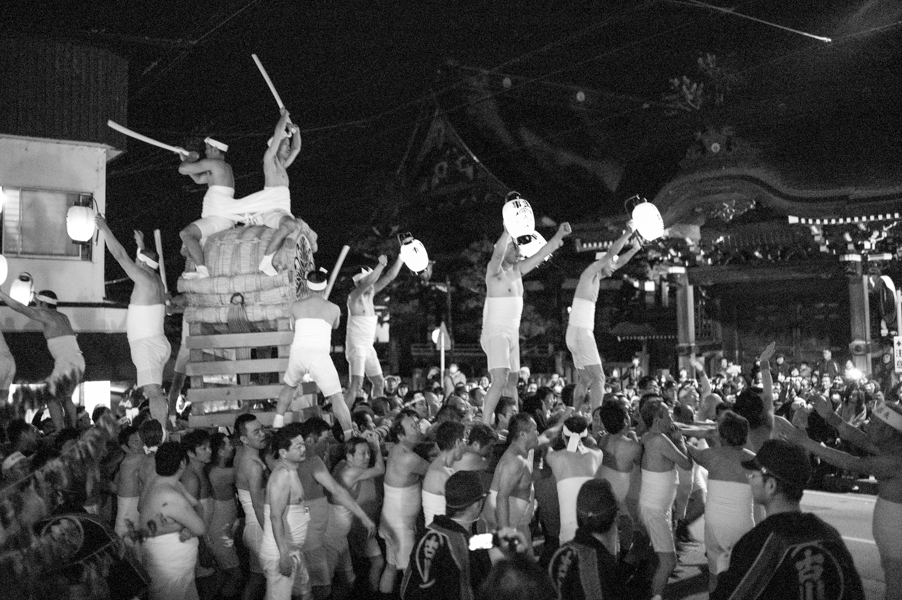
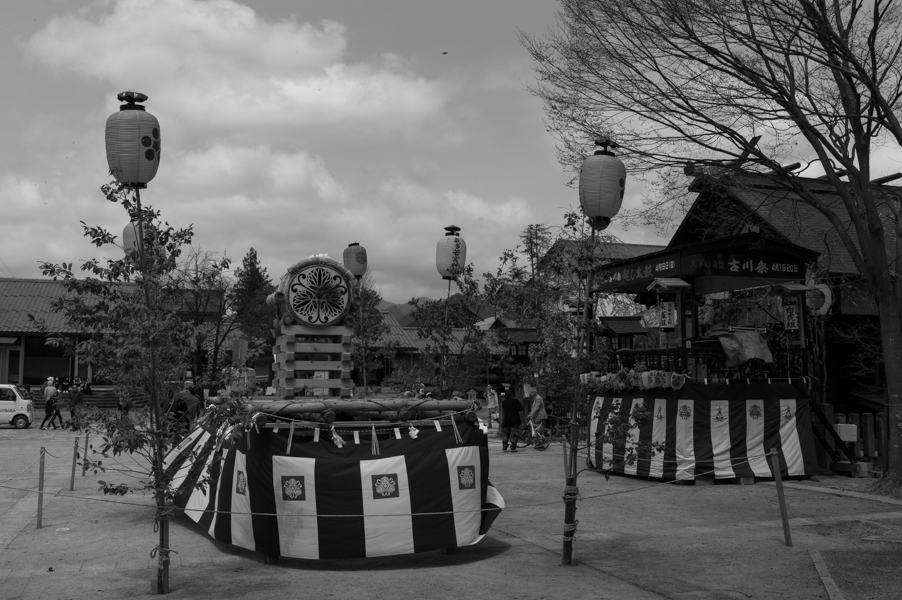
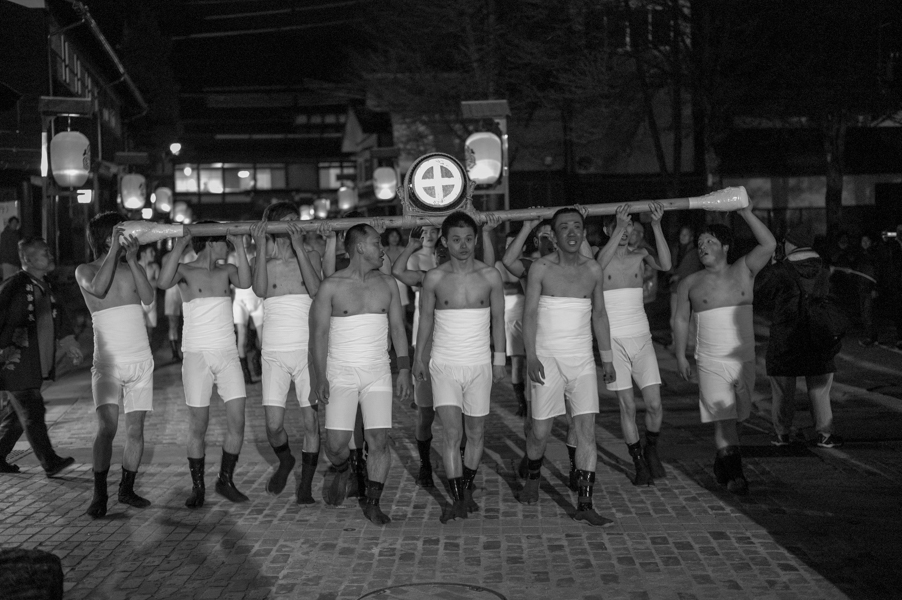
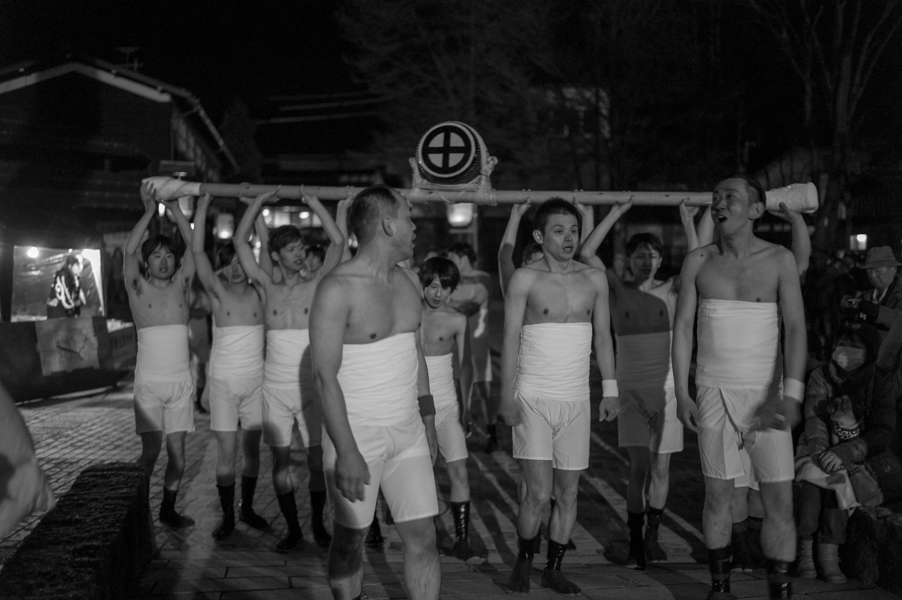
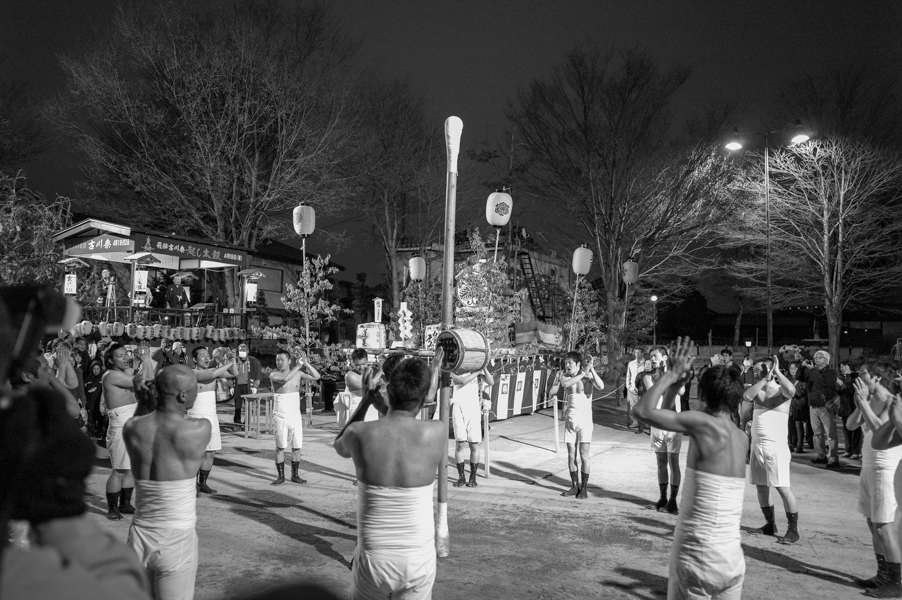
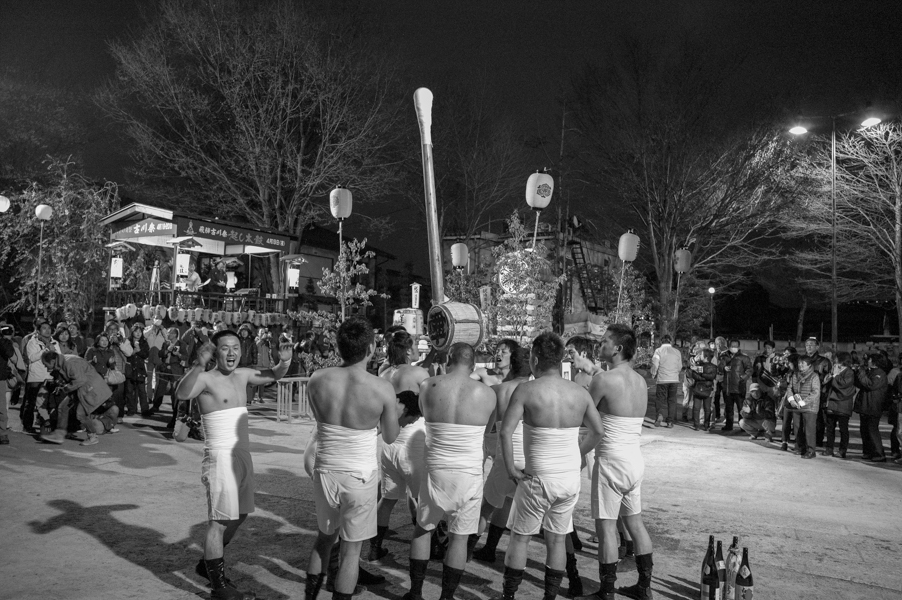
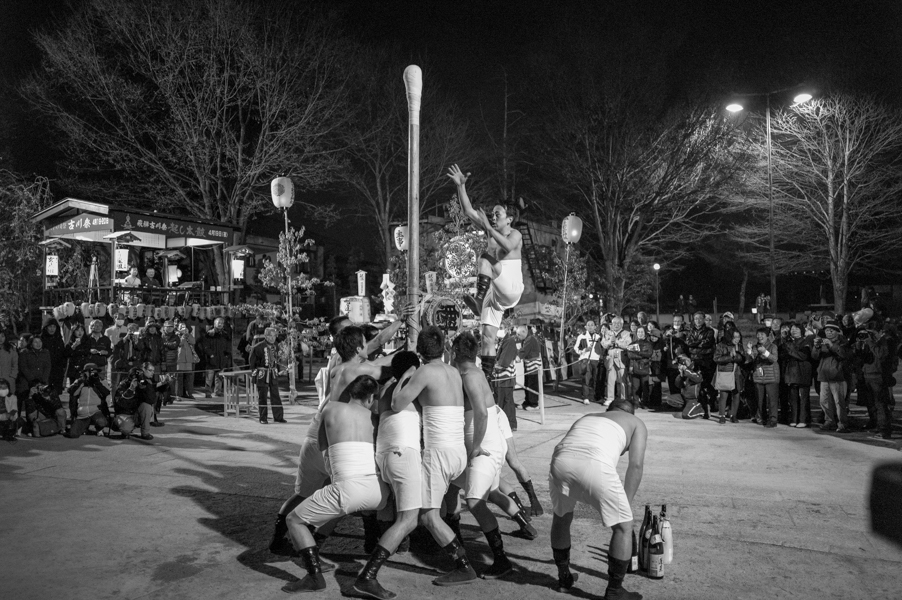
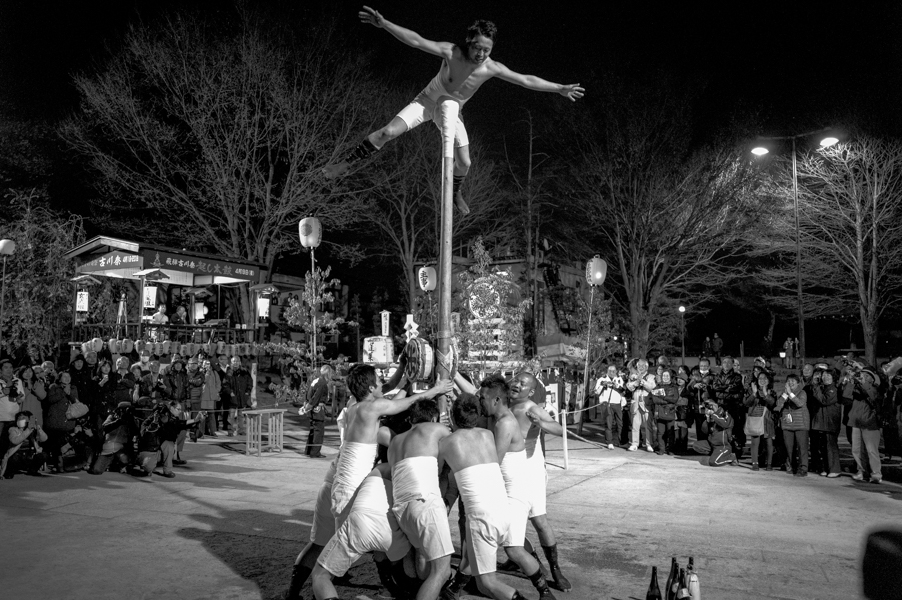
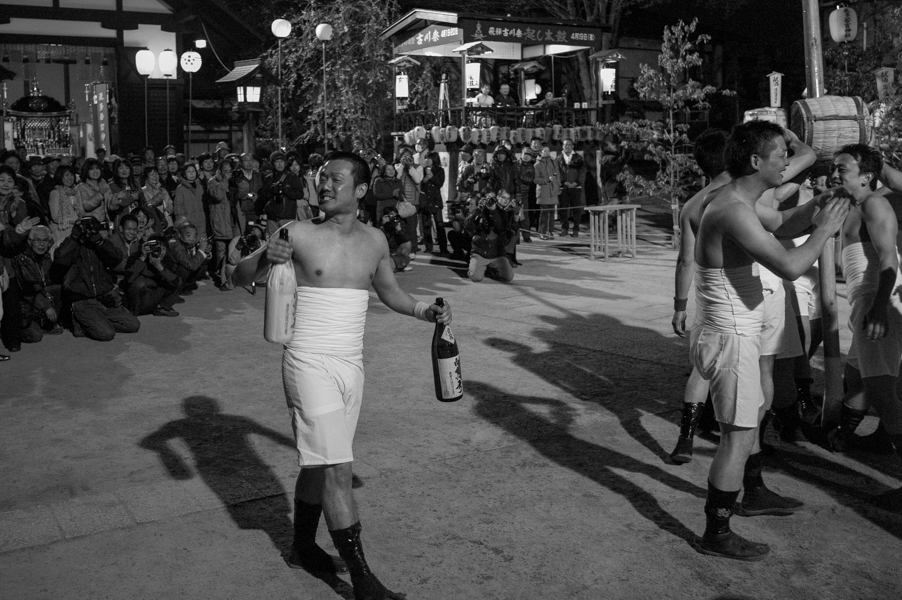
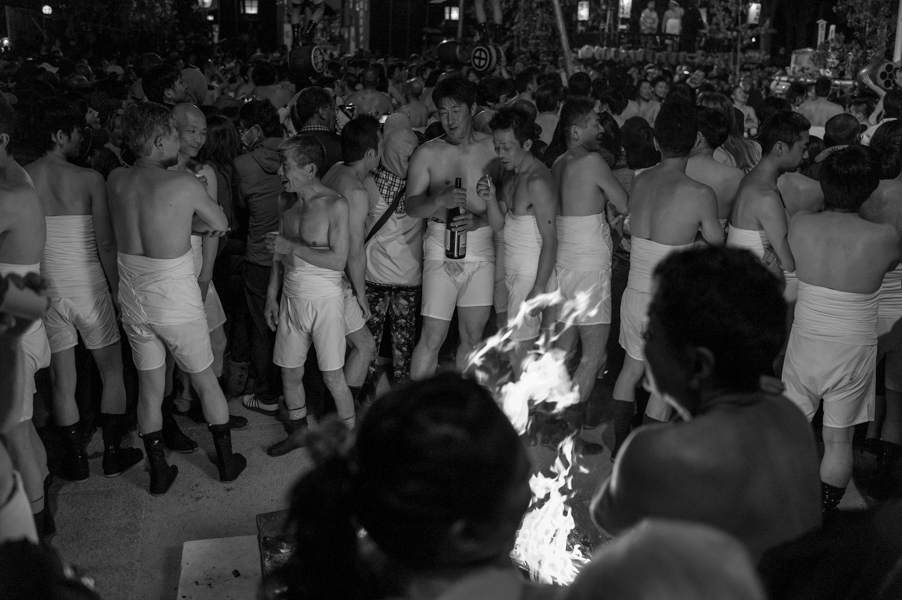
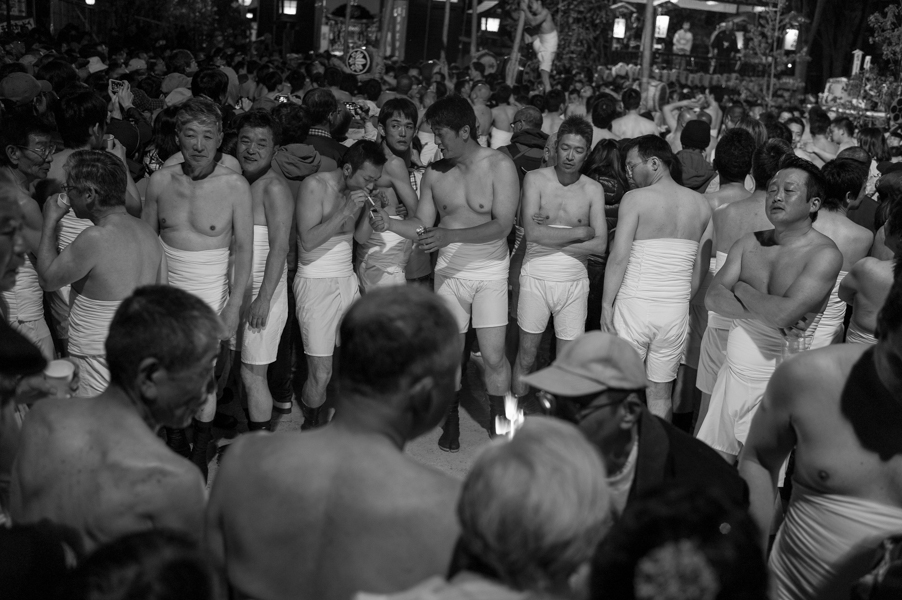
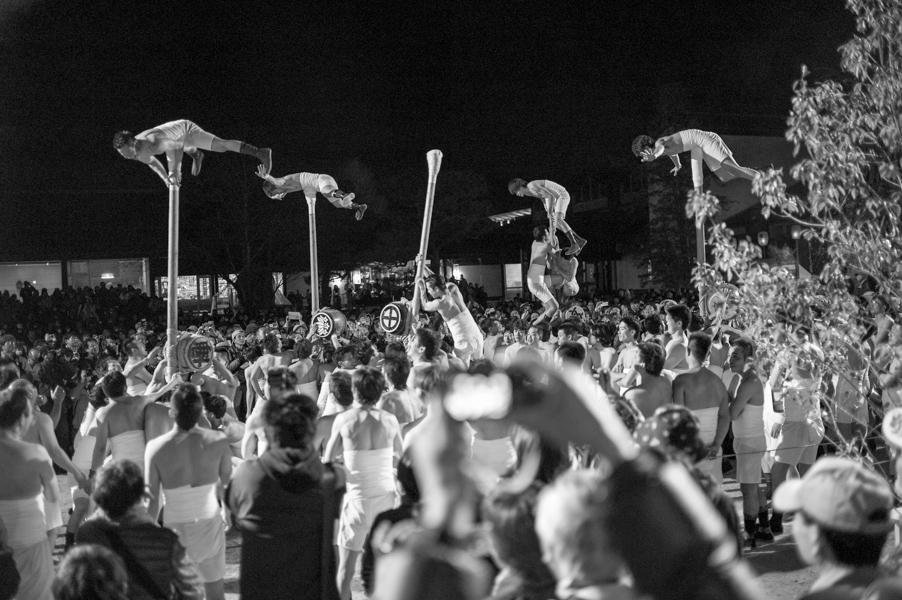
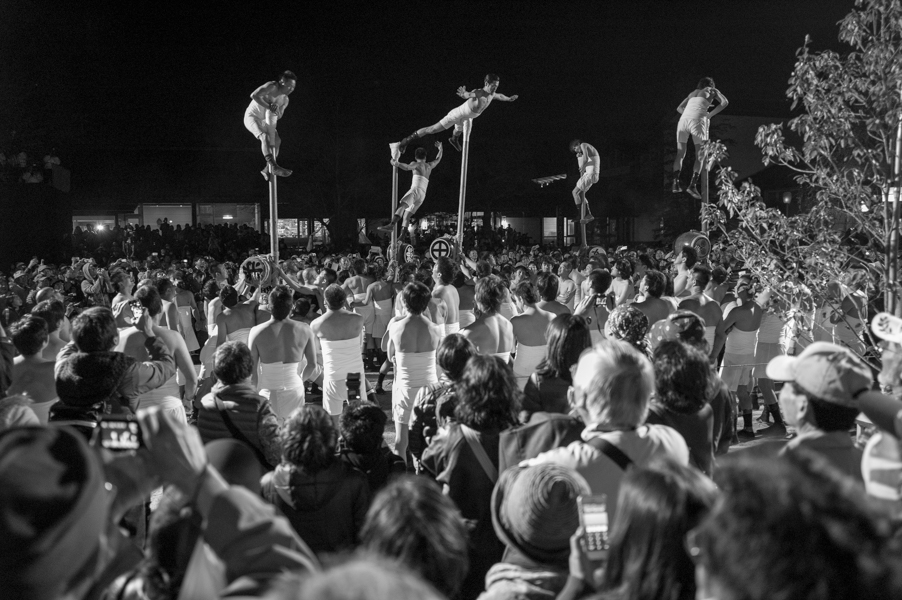
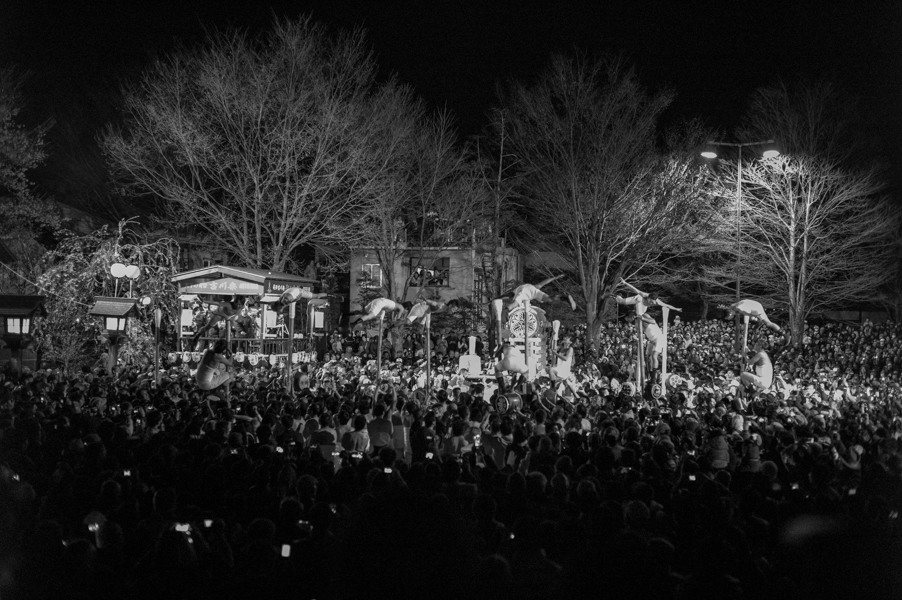
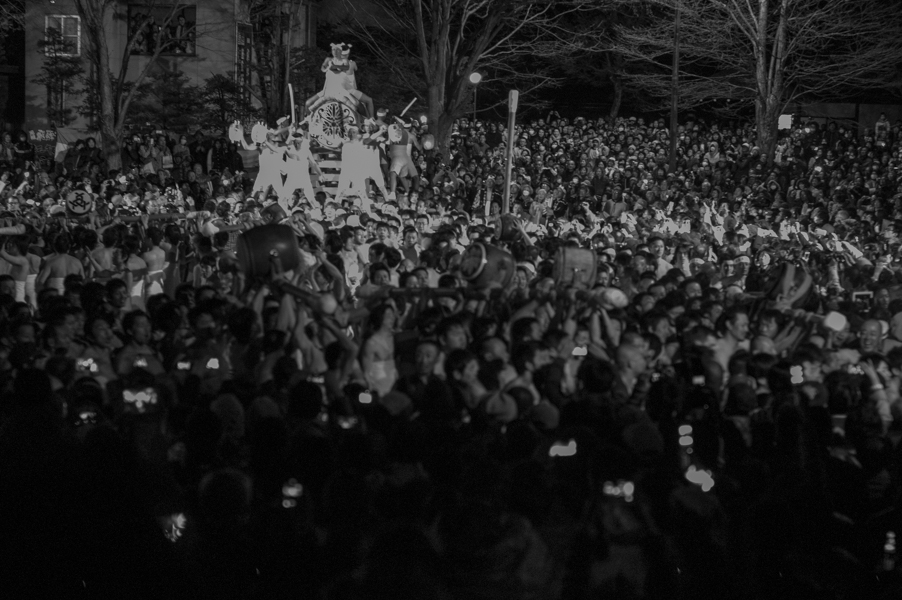
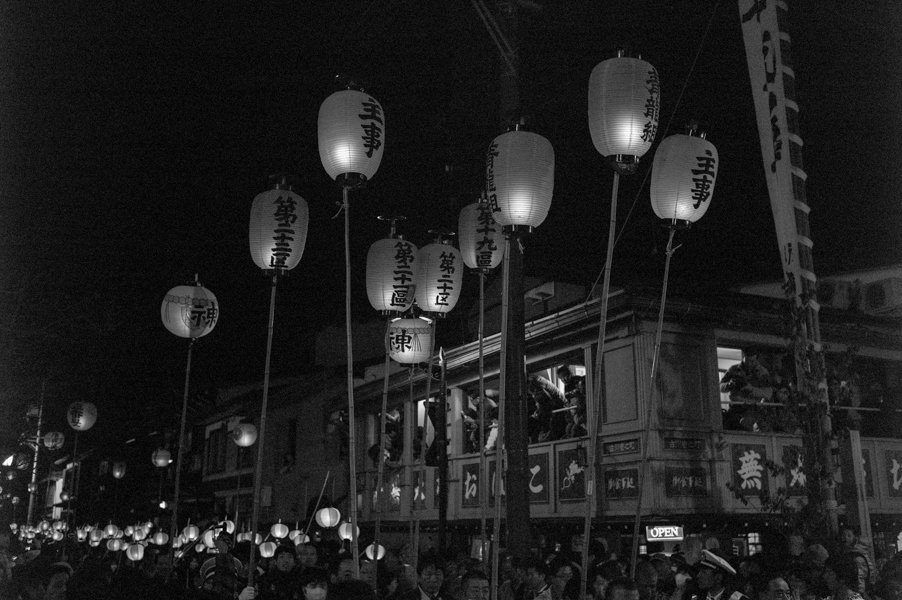
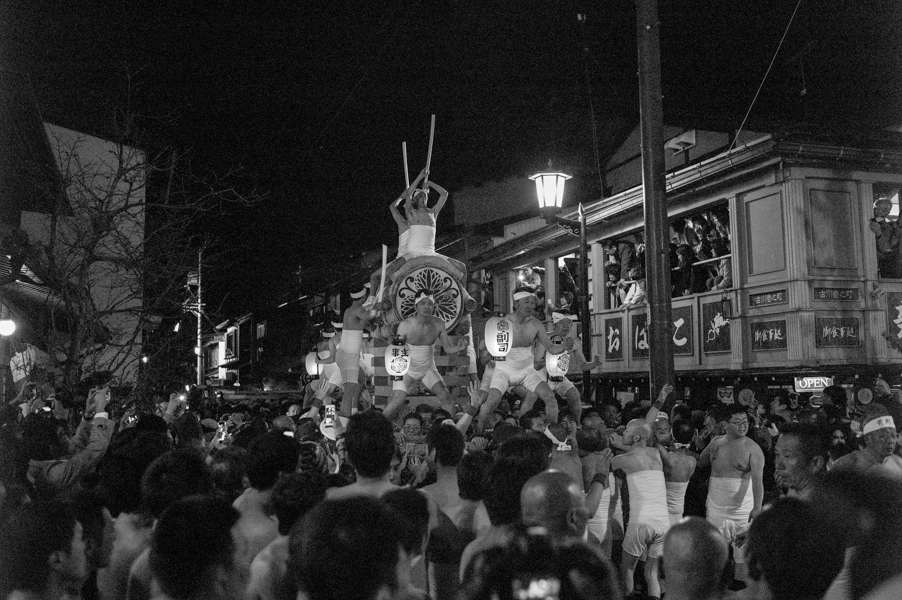
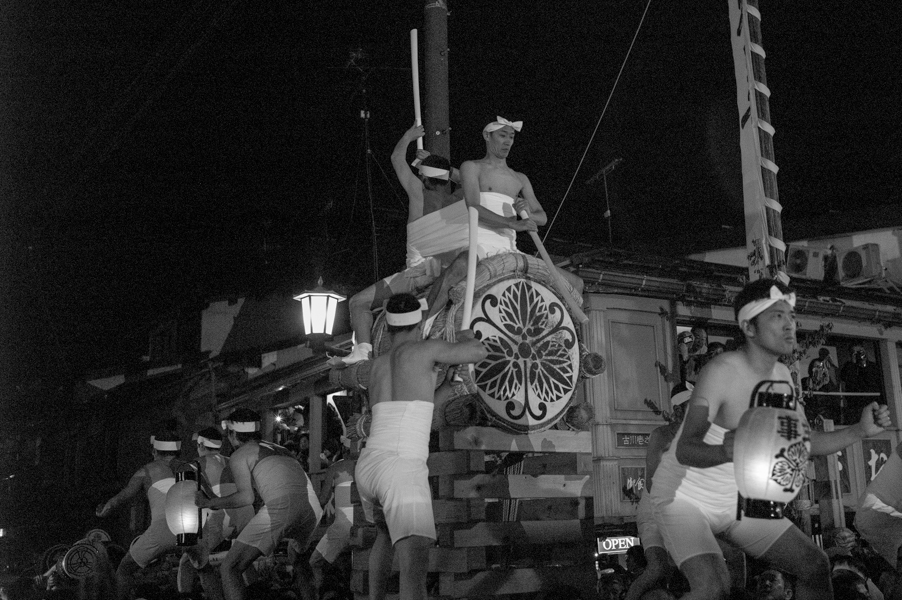
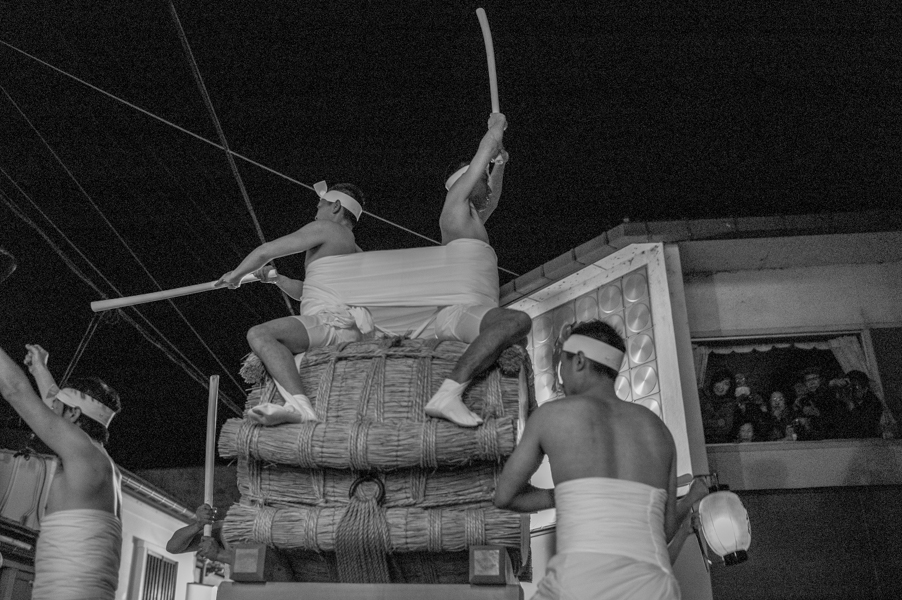
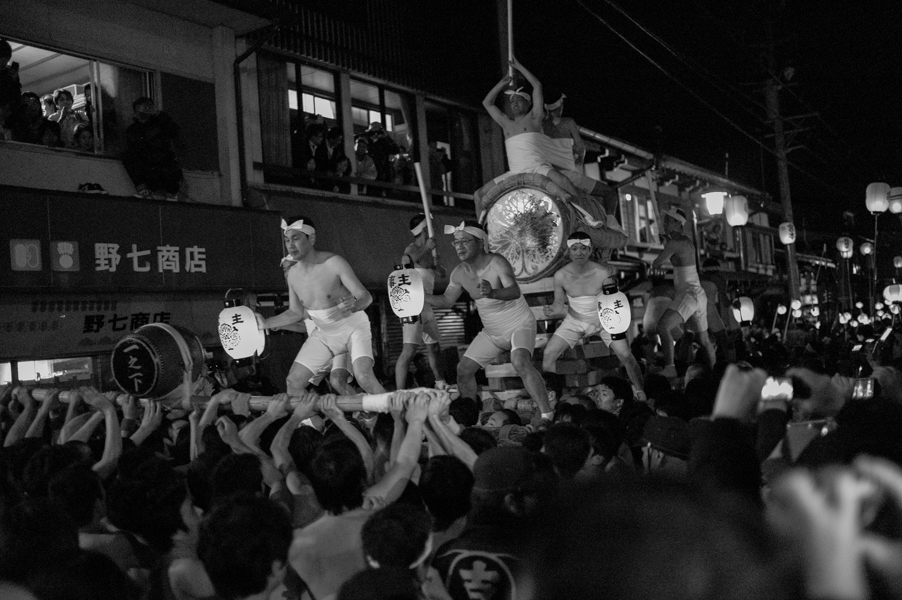
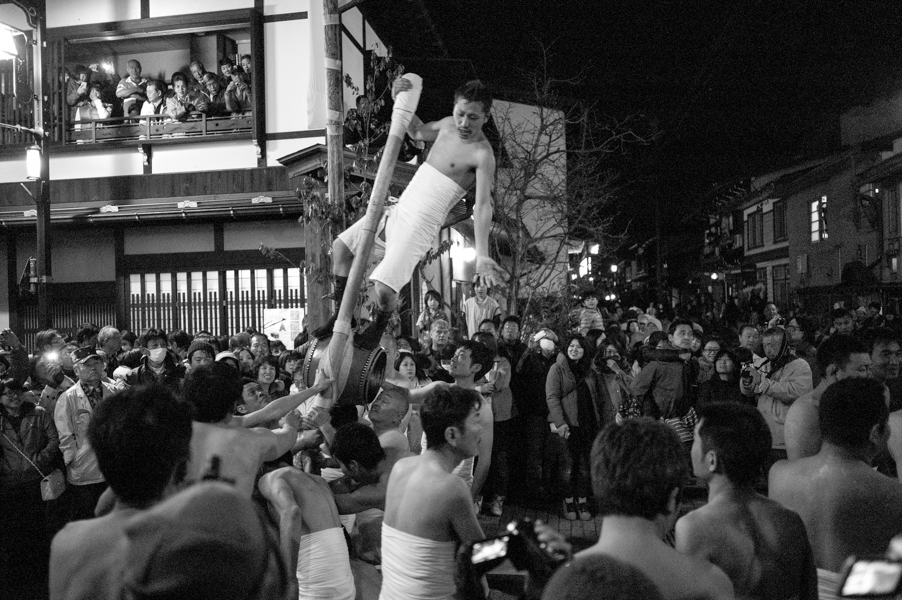
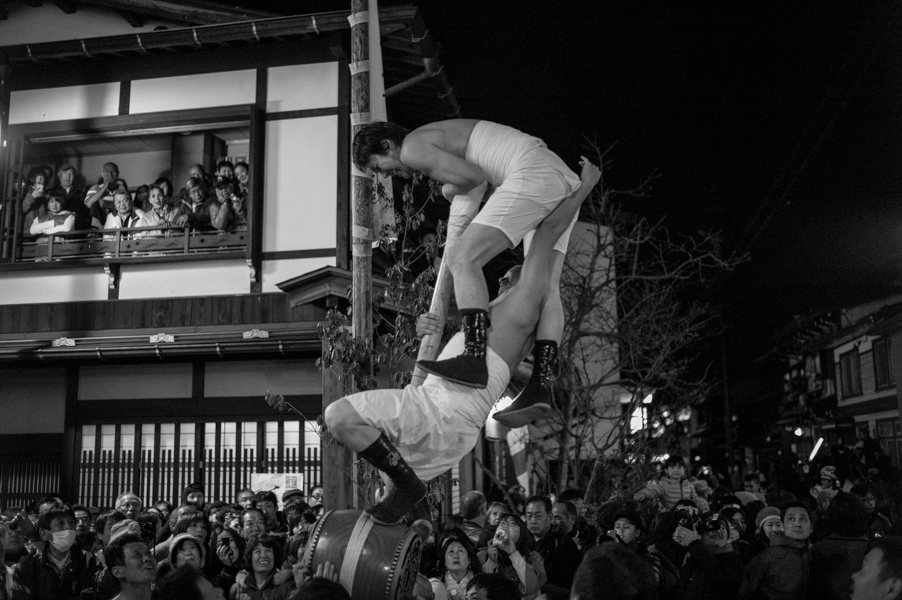
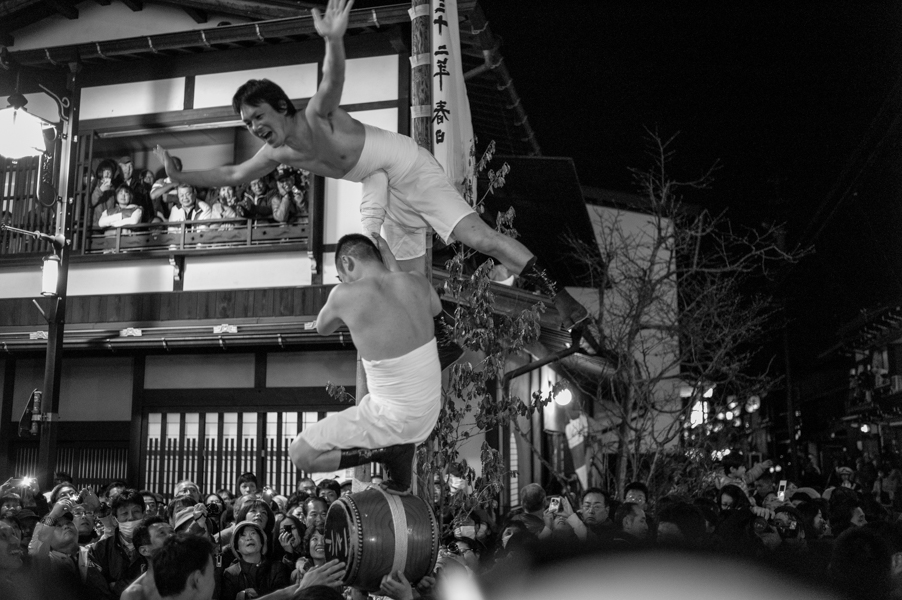
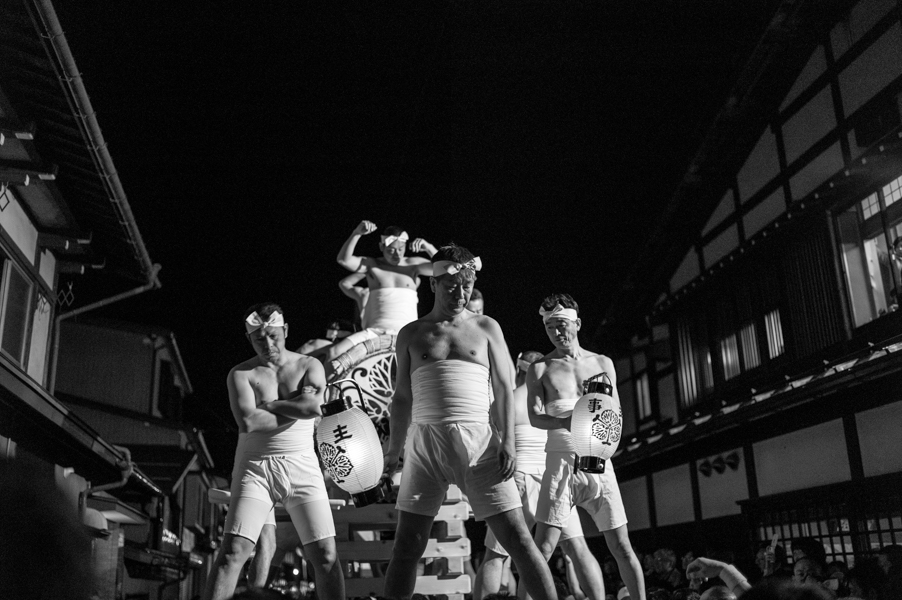
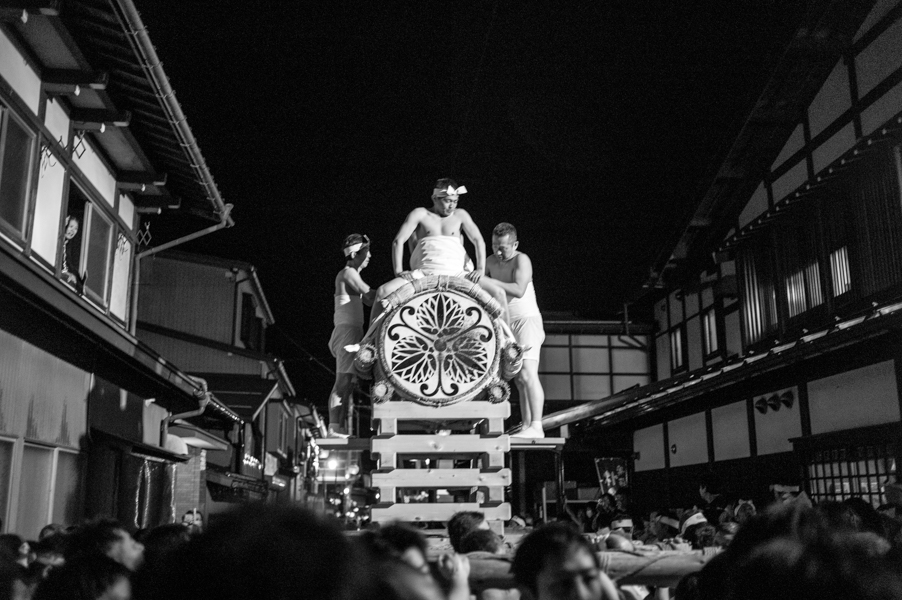
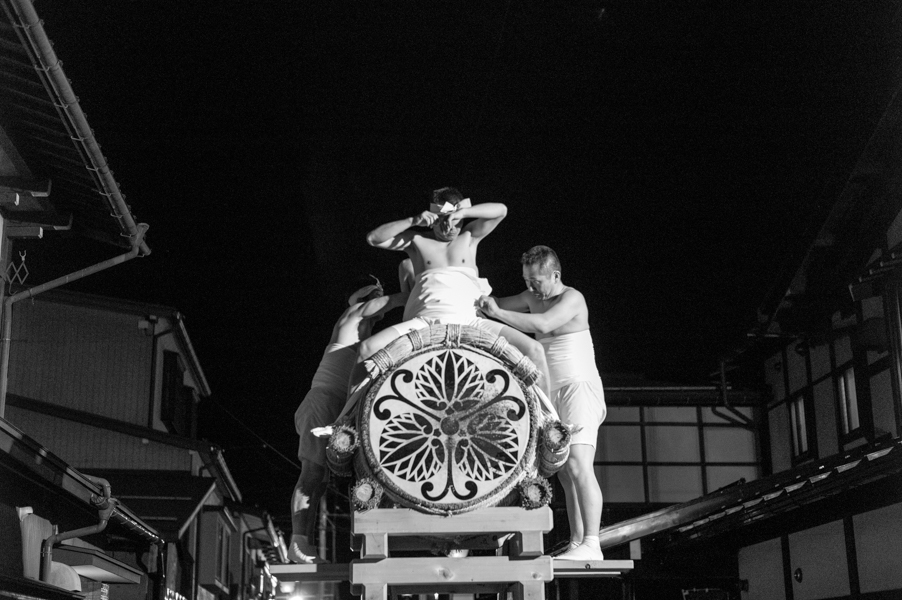
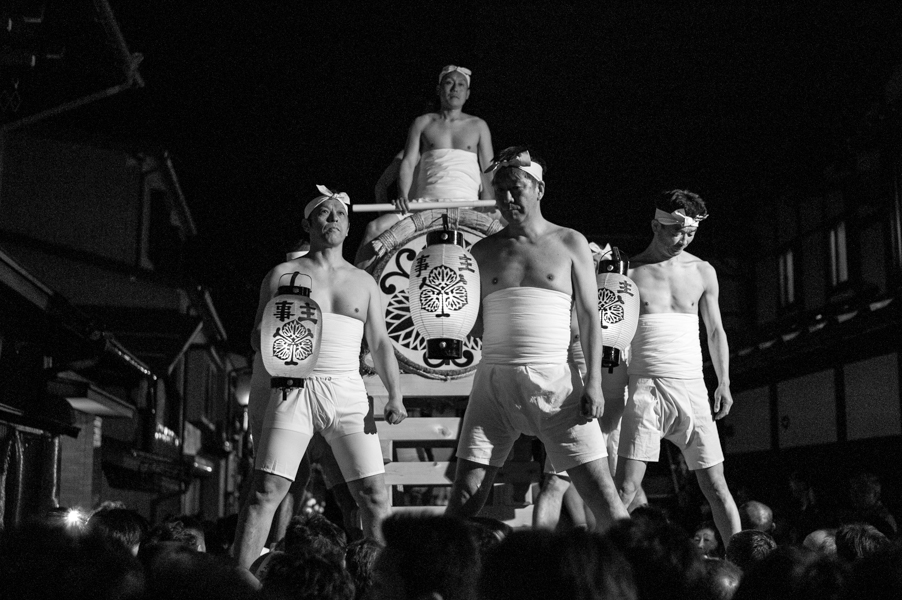
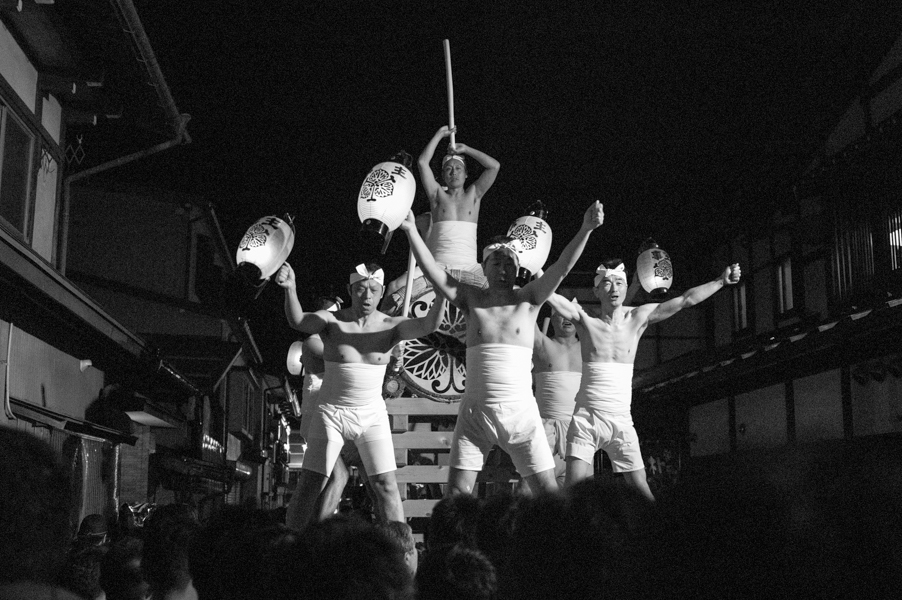
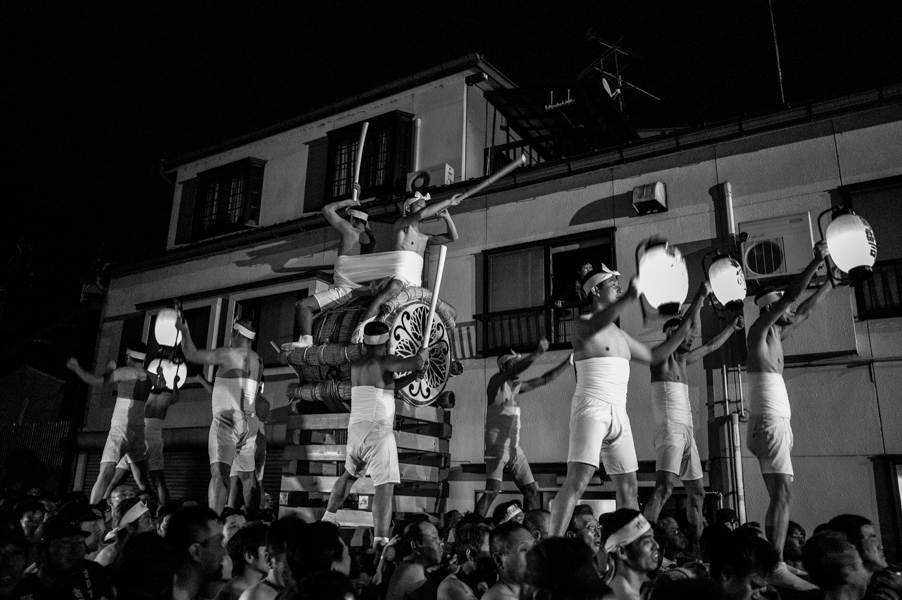
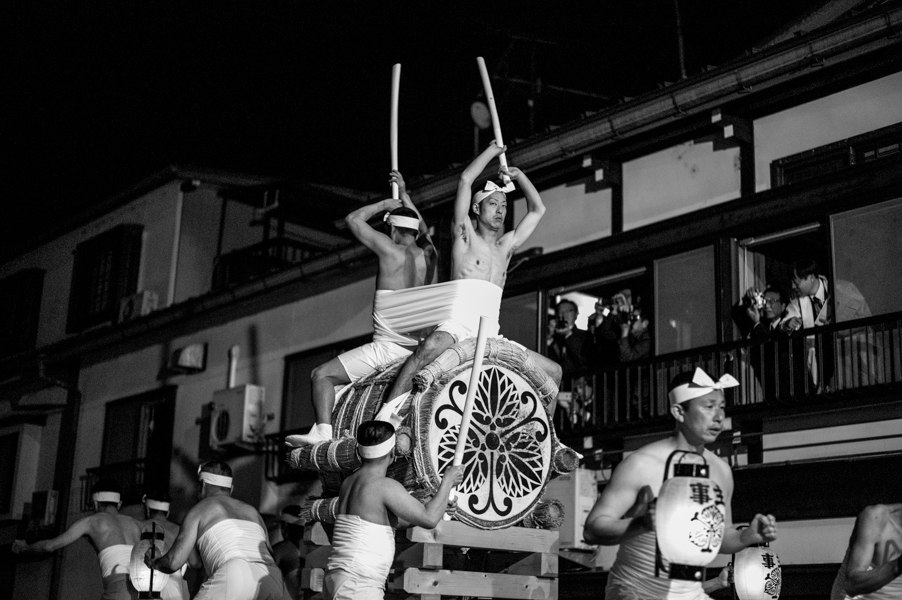
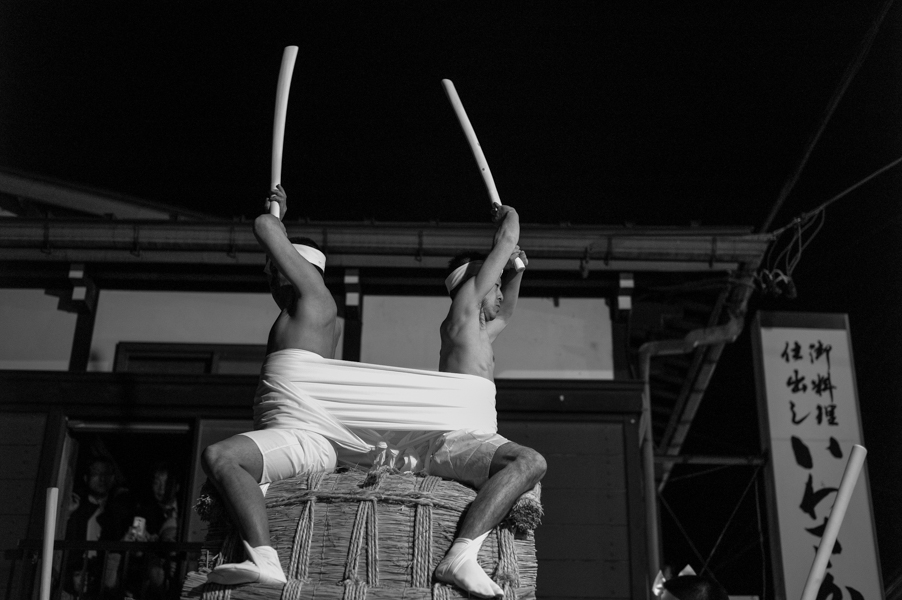
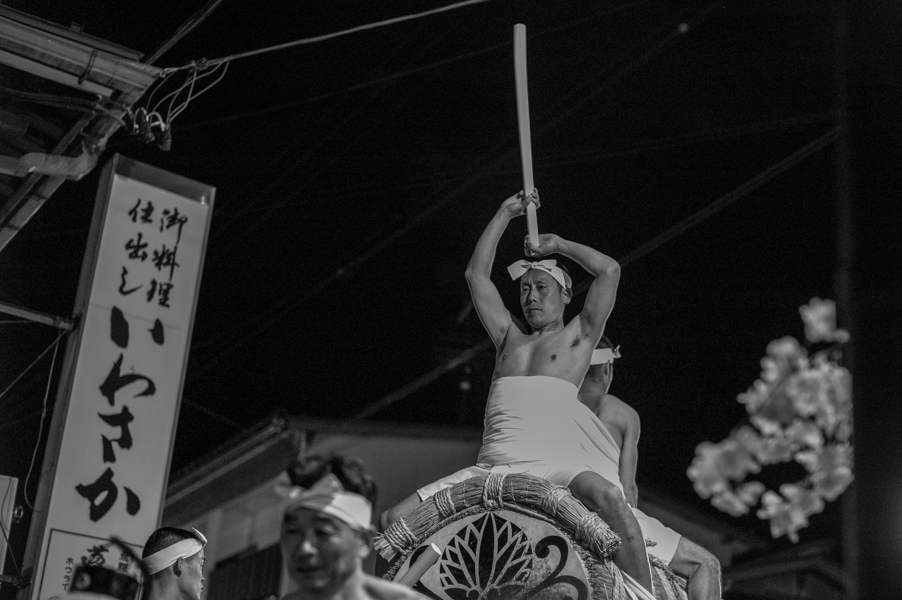
Leave a Reply